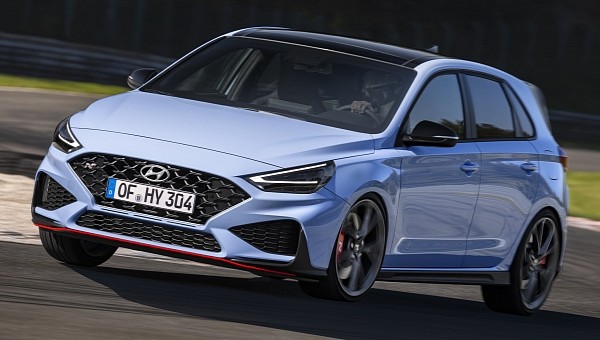Hyundai only recently entered the front-wheel drive compact hot hatch segment. Their proposal is known as the i30 N, and it was introduced in 2017, unlike some of its rivals, like the iconic Volkswagen Golf GTI and Honda Civic Type R, which have been around for much longer.
Despite being only five years old, the Hyundai i30 N has managed to prove its worth as a fun-to-drive car, and it even managed to steal some clients from its competitors. But as all good things must come to an end eventually, the Korean auto marque will not offer a second generation of its hot hatch.
According to CarExpert, the announcement was made by the brand’s Executive Technical Advisor, Albert Biermann, at the Australian N Fest held at The Bend Motorsports Park last weekend, who blamed the decision on the upcoming emission regulations in Europe.
“In Australia, we’re in a good position. Other markets, like Europe, are dreaming and there’s a good chance there will be no further combustion engine N cars in some markets with Euro 7 regulations looming,” Biermann said.
An ICE-powered successor of the hot hatch may thus not be in the making, but that doesn’t necessarily mean that Hyundai N will abandon the segment altogether. You know where this is going, don’t you? If you said electric, then you are right, because it might go down the zero-emission route.
“When we talk C segment N EV, it could be a hatchback then, but it might take some time to get there, to get it right,” revealed Biermann.
The i30 N Sedan, otherwise known as the Elantra N, is expected to survive for a second generation “with a new petrol engine, as it’s already in our long-range plans,” Biermann added.
Before deciding on the future of the i30 N, Hyundai’s N Division will launch their first-ever battery-electric vehicle as a performance version of the Ioniq 5. It is expected to be due shortly, packing the same powertrain as the Kia EV6 GT, which has 576 hp (585 ps / 430 kW) and 546 lb-ft (740 Nm) of torque on tap. Its cousin needs 3.4 seconds to hit 60 mph (97 kph) from a standstill and can keep pushing up to 161 mph (259 kph).
According to CarExpert, the announcement was made by the brand’s Executive Technical Advisor, Albert Biermann, at the Australian N Fest held at The Bend Motorsports Park last weekend, who blamed the decision on the upcoming emission regulations in Europe.
“In Australia, we’re in a good position. Other markets, like Europe, are dreaming and there’s a good chance there will be no further combustion engine N cars in some markets with Euro 7 regulations looming,” Biermann said.
An ICE-powered successor of the hot hatch may thus not be in the making, but that doesn’t necessarily mean that Hyundai N will abandon the segment altogether. You know where this is going, don’t you? If you said electric, then you are right, because it might go down the zero-emission route.
“When we talk C segment N EV, it could be a hatchback then, but it might take some time to get there, to get it right,” revealed Biermann.
The i30 N Sedan, otherwise known as the Elantra N, is expected to survive for a second generation “with a new petrol engine, as it’s already in our long-range plans,” Biermann added.
Before deciding on the future of the i30 N, Hyundai’s N Division will launch their first-ever battery-electric vehicle as a performance version of the Ioniq 5. It is expected to be due shortly, packing the same powertrain as the Kia EV6 GT, which has 576 hp (585 ps / 430 kW) and 546 lb-ft (740 Nm) of torque on tap. Its cousin needs 3.4 seconds to hit 60 mph (97 kph) from a standstill and can keep pushing up to 161 mph (259 kph).









